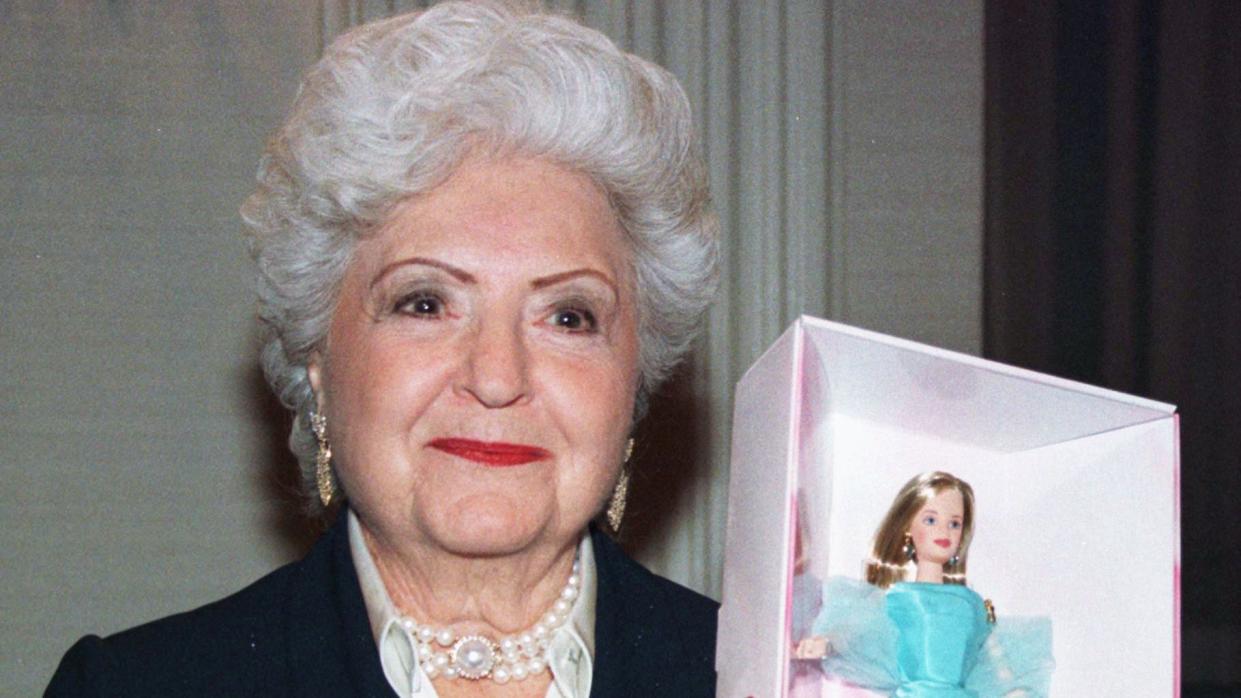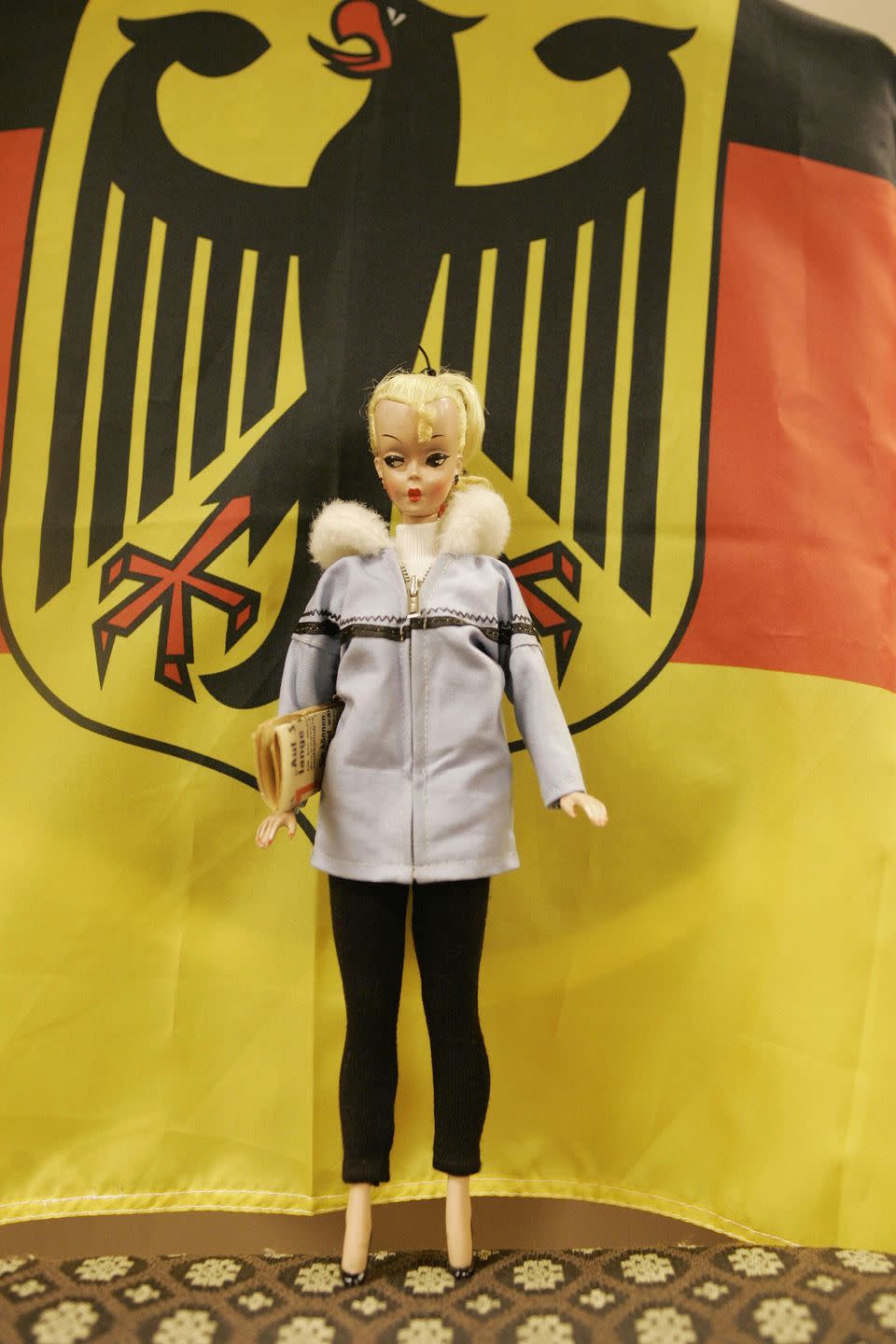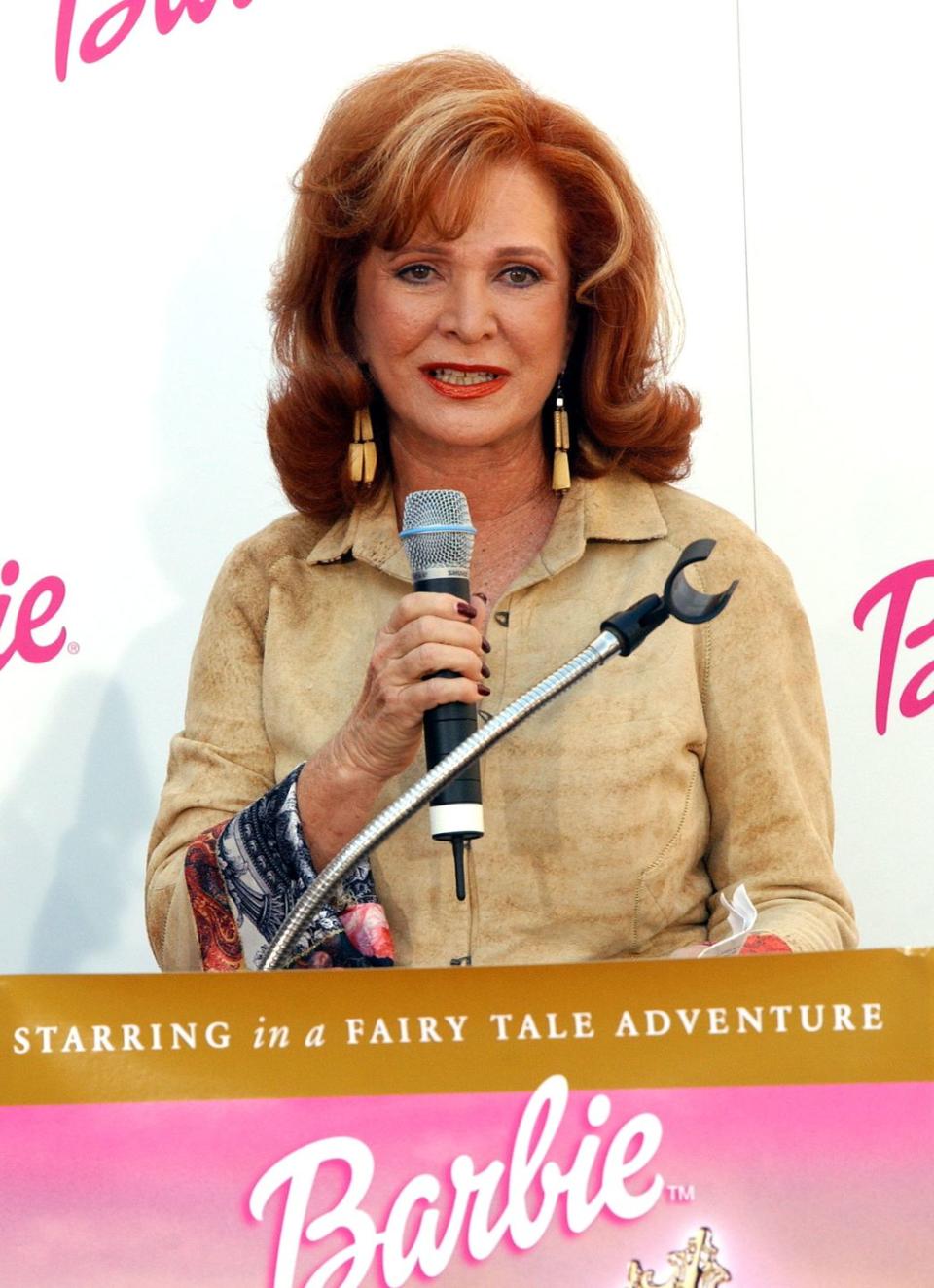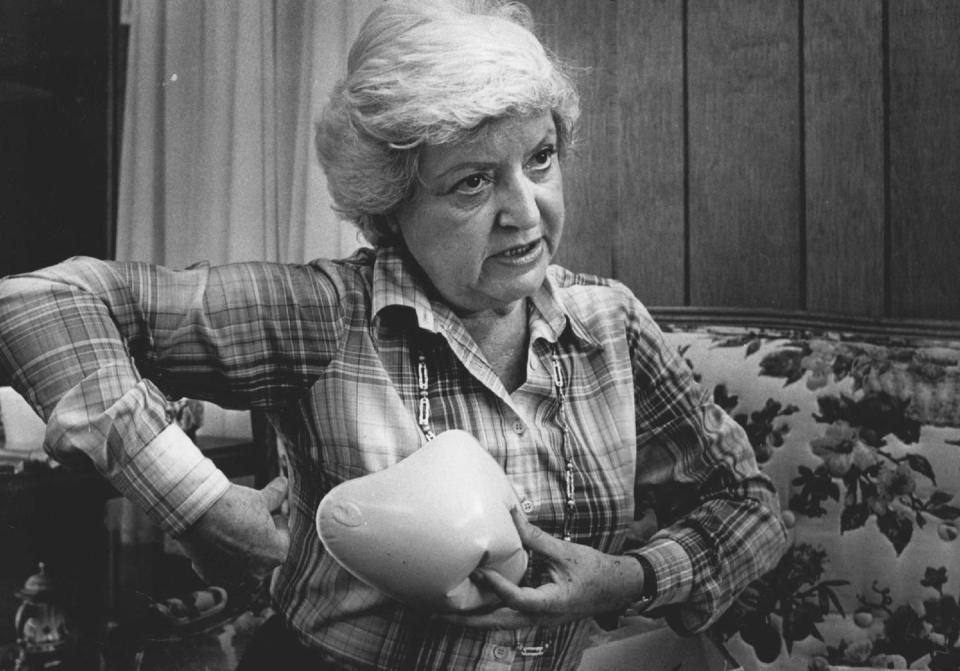There’s More to Barbie Creator Ruth Handler’s Story than ‘Barbie’ Shares

- Oops!Something went wrong.Please try again later.
- Oops!Something went wrong.Please try again later.
- Oops!Something went wrong.Please try again later.
"Hearst Magazines and Yahoo may earn commission or revenue on some items through these links."
The Barbie doll debuted in 1959 and has since become one of the most iconic children’s toys of all time. Now the character is headlining one of the summer’s most anticipated movies, Greta Gerwig’s live-action Barbie movie starring Margot Robbie and Ryan Gosling.
But, surprisingly, the character that inspired Mattel Inc. cofounder Ruth Handler, who’s played by Rhea Perlman in the film, to create Barbie wasn’t meant for kids at all. The doll’s origins stem from comic strips in post–World War II era Germany featuring a risqué character named Bild Lilli. The irreverent and sexually suggestive Lilli inspired a novelty doll for European men, which ultimately caught the eye of Handler and led to Barbie’s creation.
Here’s everything you need to know about Handler, her inspirations, and how she created the Barbie empire.
Handler’s Big Idea
Ruth—born Ruth Mosko on November 4, 1916, in Denver—moved to California at age 19 and married her high school sweetheart, Elliot Handler, in 1938. Their partnership marked the beginning of a toy empire.
After the two launched a successful giftware business from their garage in Los Angeles—making bowls, mirrors, and other household items out of plastic—the Handlers officially co-founded Mattel Creations in 1945 along with industrial engineer Harold Mattson. According to The Los Angeles Times, the company’s early toy successes included a child-size ukulele called the Uke-A-Doodle and a cap gun called the Burp Gun, which it advertised on television.
Looking for another big seller, Elliot focused on developing a talking doll for children, which evolved into Chatty Cathy. But Ruth had a different idea altogether. Seeing her daughter Barbara’s fascination with paper dolls of career women, she wished to create a lifelike, anatomically correct adult doll that would allow young girls to “dream dreams of the future.”
However, male colleagues dismissed the concept, saying it would be too difficult to manufacture and that no mother would buy such a doll for her child. “They were all horrified by the thought… of wanting to make a doll with breasts,” Handler said in M.G. Lord’s 1994 book Forever Barbie: The Unauthorized Biography of a Real Doll.
Although she temporarily cast the project aside, a 1956 vacation to Switzerland would show Handler her idea had potential.
Finding Inspiration in Bild Lilli

While on the trip, Handler and a teenaged Barbara came across a Bild Lilli novelty doll on display.
Created by Reinhard Beuthien, the Lilli character debuted in the comics of German newspaper Bild-Zeitung in 1952. She was portrayed as a “golddigger, exhibitionist, and floozy” according to Lord, and often appeared scantily clad.
Lilli quickly became popular and was turned into a plastic doll—a novelty toy given to men as a gag gift. Lord explained in her book that men would hang the doll off the rearview mirror of their cars and take Lilli to bars, pulling down her pants or lifting up her skirt as a source of humor. At just under a foot tall, Lilli also had an exaggerated physique featuring a disproportionately large bust, blue eye shadow, and a distinctive blonde ponytail. “She was a pornographic caricature,” Lord told The Washington Post.
But Handler saw a source of inspiration for her own doll and quickly amassed a collection of almost two dozen of the European toys upon her return to California. Barbara kept one Lilli in her room, while her mother took the rest to Mattel for a makeover. The company not only changed the doll’s physical characteristics—upgrading her plastic and making alterations to her lips and eyebrows—but also her personality, turning Lilli from a sex object into the fashion-crazed girl next door we all know today.

Barbara Millicent Roberts, named after Handler’s daughter and shortened to Barbie, debuted at the American International Toy Fair in New York in 1959. Her male counterpart—Kenneth Sean Carson, or simply “Ken”—appeared two years later and was named after the Handlers’ son.
And the Rest Is History, Right?
Not quite. Barbie quickly became popular, with 300,000 dolls sold in just the first year of production, but Mattel soon faced a legal challenge from Bild Lilli’s manufacturer.
German toymaker Greiner & Hausser sued Mattel in 1961, alleging infringement of its patent for the “doll hip joint” used on the Lilli doll. According to The Los Angeles Times, the two sides settled out of court in 1963, and Mattel purchased the German company’s copyright and patent rights in 1964. Decades later, in 2001, the court-appointed liquidator for then-bankrupt Greiner & Hausse sued Mattel in Germany and sought royalties for every Barbie doll sold after their sale agreement. However, the case was eventually dismissed.
Get the latest from Biography.com delivered straight to your inbox.
Additionally, a former designer at Mattel, Jack Ryan, sued the company in 1980 after claiming he, not Handler, actually created Barbie and named the doll after his wife. Mattel settled, and Ryan later died by suicide in 1991 following a stroke.
Despite all these setbacks, Mattel’s flagship product has flourished with well over 1 billion dolls sold. By 1966, Mattel controlled 12 percent of the $2 billion toy market in the United States, according to The Los Angeles Times. However, Handler’s position within the company wouldn’t last.
Leaving Mattel and Handler’s Next Act
Handler served as Mattel president until her resignation in 1973. New managers began to diversify the brand beyond toys soon after, and she and Elliot were out of the company altogether by 1975.
Handler’s health had presented challenges, as she underwent a mastectomy for breast cancer in 1970. With discussion around the disease still limited at that time, she admitted years later the diagnosis left her unfocused and contributed to her exit from Mattel. Additionally, Handler was indicted on charges of fraud and false reporting to the Securities and Exchange Commission in 1978, pleading no contest. She was sentenced to 2,500 hours of community service and a $57,000 fine.

Still, Handler sought to be a force for good up until her death from colon surgery complications at age 85 in April 2002. She founded Ruthton Corp. in 1976 and, inspired by her own cancer recovery process, created and manufactured the Nearly Me prosthetic breast to help other survivors of the disease. She made talk show appearances and crafted handwritten invitations to market the product, and her sales team trained department store workers to fit patients for the prosthetic. Former First Lady Betty Ford, who also underwent a mastectomy, was even fit for a Nearly Me.
Even after selling the company in 1991, Handler continued to educate women about the importance of screenings for early detection of breast cancer. “I didn’t make a lot of money in it,” she said of her post-Mattel venture. “It sure rebuilt my self-esteem, and I think I rebuilt the self-esteem of others.”
See Barbie in Theaters Now
Barbie (Margot Robbie) and Ken (Ryan Gosling) leave Barbie Land and venture into the human world for the first time in Barbie, directed by Greta Gerwig.
You Might Also Like

